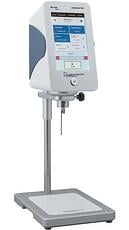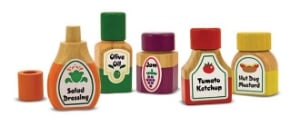One of the most frequently asked questions we get is, "How can I get a viscosity reading from the Bostwick Consistometer?" The answer is, "You can't." We've elaborated on this in other articles. We've even got a great infographic to explain the difference. With this article, I hope to advance the understanding of the difference between these concepts even further.
To try and put it simply, consistency is the relative ability of a sample to flow. The results that the consistometer gives you won't be standards used worldwide, nationwide, or even industry-wide, because they can't be. The consistometer can only tell you how far your product will spread under its own weight in the amount of time you set.Viscosity is more complex. Viscosity is the measure of how hard it is to force a substance into motion, or flow. With most substances, the amount of force and/or the amount of time the force is applied will alter a substance's viscosity. That said, the results you get from a viscometer are numbers that can be compared to industry, national, and international standards.
Clear as mud?
The fact remains that these two phenomena are similar enough to warrant the question, "Do I need to test consistency or viscosity?"
What is a consistometer? What is a viscometer?
Consistency and viscosity are measured differently, and each has its own instrument to do the job. Let's start with a primer on the instruments themselves:

A consistometer is a long trough separated near one end by a spring-loaded gate. To use the consistometer, you fill the gated section to the brim with your sample, then release the gate and time how long it takes the liquid to spread to a predetermined notch on the trough. In effect, what you are doing is measuring the flow rate of your sample when no external force is acting on it.
There are several different types of viscometers - glass capillary, falling ball, and rotational being just a few of the options. I'm going to talk about the rotational viscometer. If you're interested in learning about the other kinds of viscometers, check out our article on the differences between kinematic and dynamic viscosity.

A rotational viscometer works by putting a spindle into your sample and rotating it. The viscometer measures how hard it is for the spindle to turn in the liquid, or how much resistance it faces from the sample.
With the consistometer, you're getting an idea of the internal characteristic of your liquid sample with no external force acting on it. With the rotational viscometer, you can learn about the characteristics of the liquid when there is an external force acting on it.
When do I use consistency or viscosity testing?
You're probably now asking yourself, "How do I know if I need to test my liquid sample with external force, or without it?" The answer is, as with so many things, it depends.
Start by asking yourself this question: "What is the goal of my testing?" What is it that you want to know about your product?
A manufacturer of toothpaste might want to make sure that his product will be thick enough to stay in the toothpaste tube without dripping, but not so thick that it will be hard to squeeze a portion onto the customer's toothbrush. In this case, a rotational viscometer testing the effects of external force (squeezing the tube) on the product would be the manufacturer's best bet.

A salad dressing manufacturer, on the other hand, who just wants to make sure each batch of dressing is roughly the same, might prefer a simpler test using the consistometer. Generally speaking, relatively free-flowing, smooth liquids such as dressings, condiments, and batters (runnier ones like cake batter) would be more likely to benefit from testing with the consistometer, provided the end goal of the testing is only quality assurance between batches.
What are the pros and cons of the consistometer and the viscometer?
Each instrument has its own benefits and limitations. The Bostwick Consistometer offers many attractive features - quick test time, ease-of-use with little training required, and the freedom to set your own standards. It's great for simple QA testing. However, the consistometer is not appropriate for all liquids. Very thick substances that won't flow of their own accord (think cookie dough), or super-thin liquids (milk, water, etc.) are not suitable for the consistometer, but could be tested with a viscometer.
Measurement done with a rotational viscometer can be compared to international and industry-wide standards. You can use the viscometer to see how the characteristics of your liquid change in different settings. However, the viscometer is more technical than the consistometer, and requires the operator to have a bit more training to properly run tests with the instrument.
Still got questions? Contact us today at testsolution@cscscientific.com or call us at (703) 876-4030. We can help you decide which instrument is appropriate for your testing situation.
Don't forget to subscribe at the top of the page to get automatic updates whenever we post a new article on our blog!
Art
P.S. Check out details on both Viscosity and Consistency.



